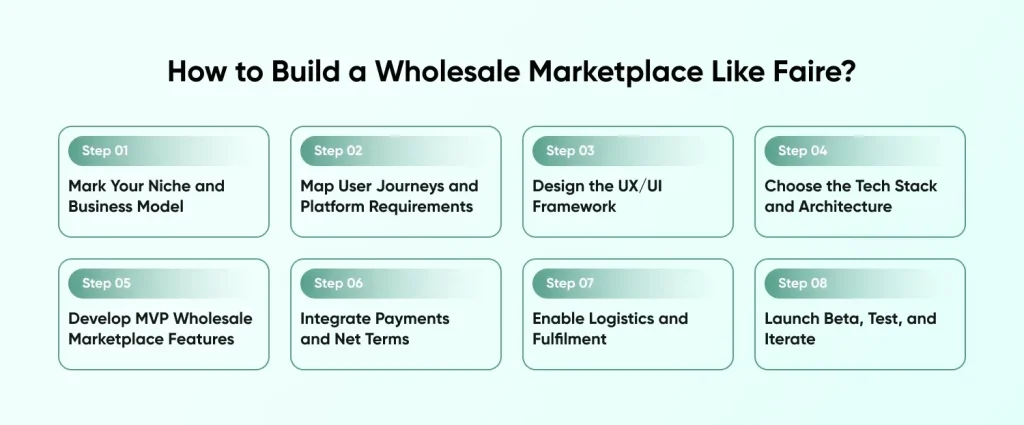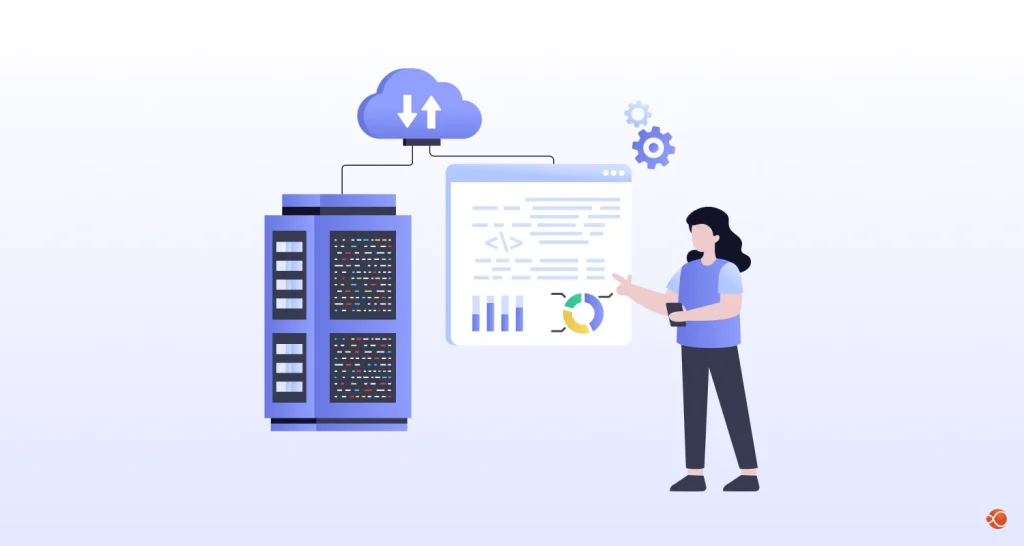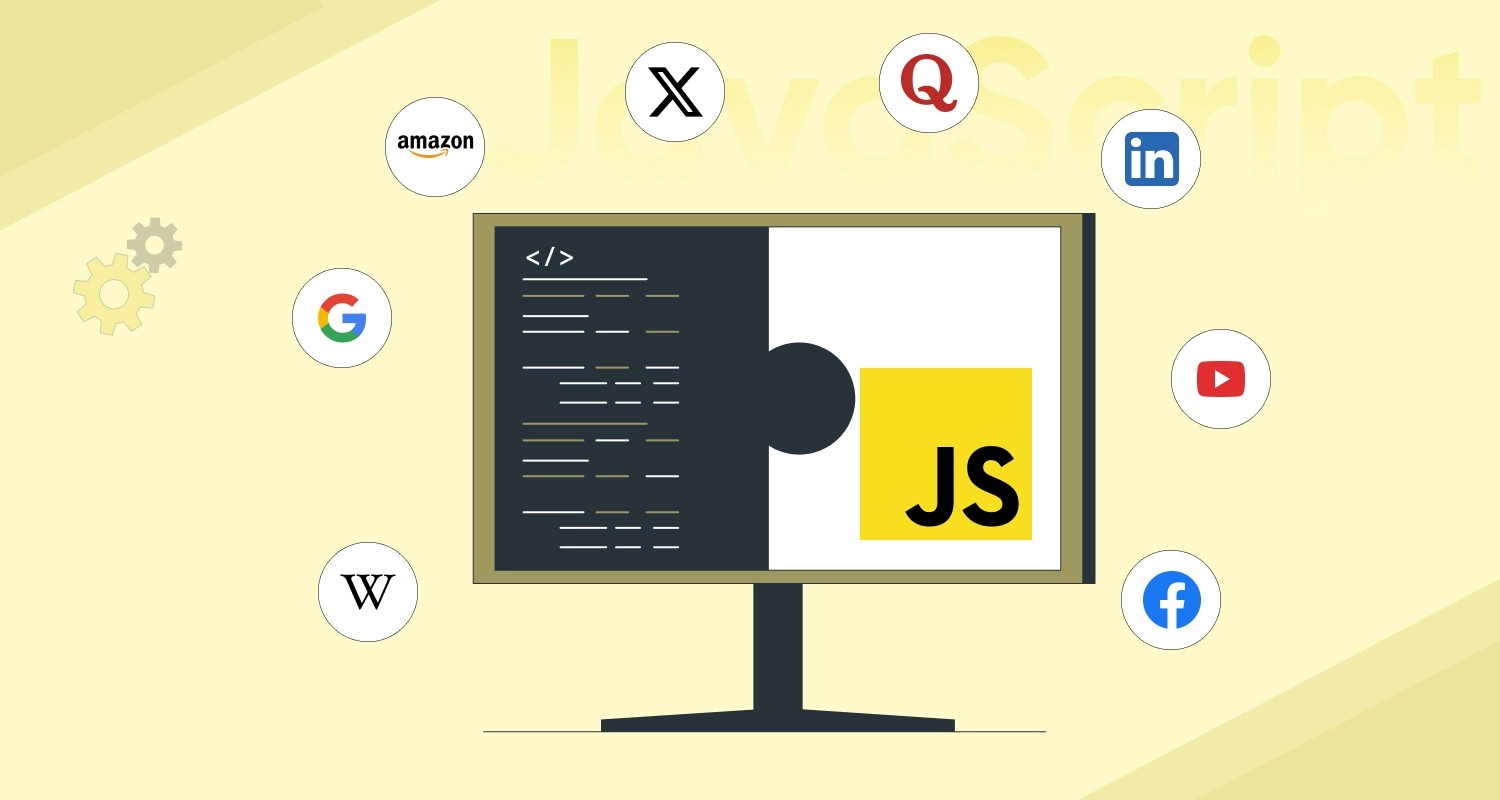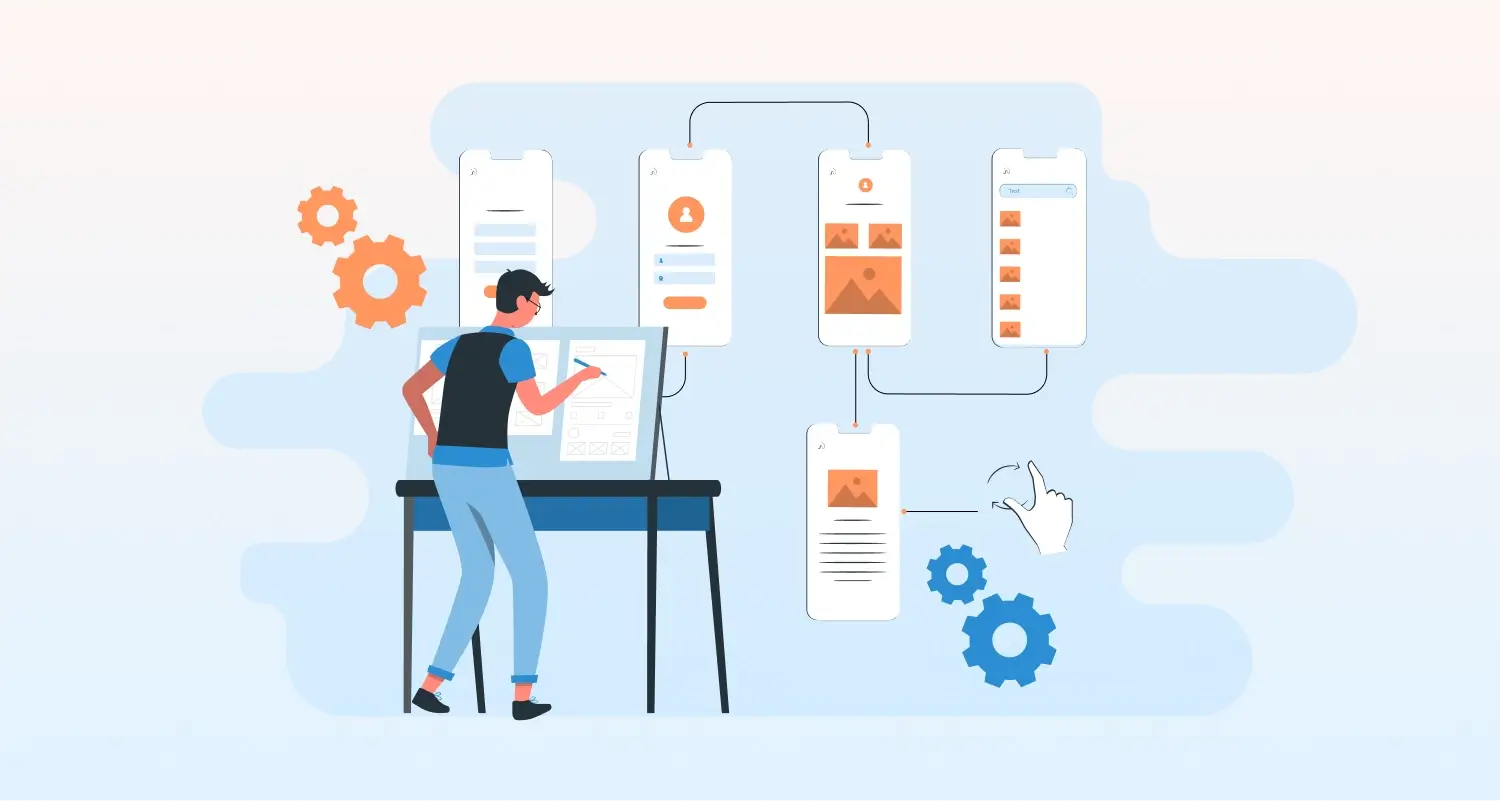Quick Summary: Want to build a wholesale marketplace like Faire? This guide breaks down exactly how to do it, covering tech, features, cost, and strategy. Whether you’re a founder, developer, or investor, get a clear path to creating a scalable B2B platform that connects brands and retailers.
The wholesale industry is going through a massive digital shift. Traditional methods like trade shows, cold calls, and paper catalogs are quickly becoming outdated as businesses demand faster, more efficient solutions.
The numbers tell the story. The global B2B e-commerce market will reach USD 4.32 trillion in 2025 and is projected to hit USD 5.89 trillion by 2029, according to Statista. This growth represents one of the biggest opportunities in modern commerce.
Faire has become the poster child for wholesale marketplace success. The platform connects independent brands with retailers worldwide, proving that the right approach can capture significant market share while creating value for everyone involved.
This guide is for entrepreneurs exploring new opportunities, startup founders with industry connections, and development teams tasked with building wholesale platforms. We’ll cover everything from why build a wholesale marketplace like faire to how, important considerations and other such aspects.
What is Faire?
Faire is a B2B wholesale marketplace that connects independent brands with retailers looking to stock unique products in their stores. Think of it as the wholesale version of a curated online shop where small businesses can find, evaluate, and buy from other small businesses without the friction of traditional wholesale.
Here’s what Faire does:
For Brands (Suppliers)
- Get access to a large network of independent retailers actively looking for new products
- Eliminate the need for trade shows, sales reps, or cold outreach
- Manage product listings, pricing, inventory, and fulfillment in one place
- Receive upfront payments while Faire handles retailer collections
- Make use of advertising and promotional tools to increase visibility
- Get detailed analysis to track performance and optimize listings
For Retailers (Buyers)
- Discover thousands of curated, independent brands across diverse categories
- Benefit from Net 60 payment terms to improve cash flow
- Reduce risk with free returns on first-time orders
- Use reviews and product ratings to make informed purchasing decisions
- Vendor management for wholesale platforms from one streamlined interface
- Filter by category, price, location, and popularity to find the right products
For the Platform (Faire)
- Earn revenue through transaction fees on each completed order
- Offer paid advertising placements and featured listings for brands
- Generate additional income from financial services like early payouts and trade financing
- Strengthen network effects as more buyers and sellers join the platform
- Offer logistics integrations and value-added services for additional margins
- Scale revenue with gross merchandise volume and marketplace activity
Faire is often called the “Shopify for wholesale” because it empowers smaller players to build an eCommerce business and compete by providing them with modern digital tools for product discovery, ordering, payments, and customer management.
Breaking Down Faire App Business Model
Faire is reshaping wholesale by building an ecommerce platform to help independent retailers and brands connect, transact, and grow. Instead of relying on outdated methods like trade shows or manual order processing, Faire brings everything into one streamlined ecosystem. The platform focuses on building a multi-vendor ecommerce marketplace that reduces operational burdens, minimizes financial risks, and accelerates business discovery for both sides of the marketplace.
1. A Two-Sided Marketplace That Scales Organically
Faire connects brands and retailers in a way that benefits both groups; it is used to build a two-sided marketplace. More brands mean better selection for retailers, while more retailers create more demand for brands. This mutual growth creates a natural flywheel effect, helping the platform scale with minimal friction.
2. Targeting a Niche That Is Overlooked by Giants
Most companies prefer to build a wholesale marketplace like Faire as it serves small businesses that often get ignored by larger platforms. These independent retailers and boutique brands need flexibility, curated experiences, and easier onboarding. Faire offers just that, making it highly relevant to a niche that values support and personalization.
3. Monetization Through Transaction Fees
Faire earns revenue by charging a commission on every order placed through its platform. This ensures its incentives align with its users. As more transactions happen, Faire grows alongside its community without the need for upfront costs or subscriptions.
4. Built-In Financial and Operational Tools
The platform handles core business tasks like payments, returns, and invoicing. Net 60 terms give retailers breathing room on payments. Brands benefit from easier fulfillment and fewer administrative headaches, making the whole process smoother and faster.
5. Positioned to Capture the Shift in B2B Commerce
As B2B buyers demand digital-first solutions, Faire is already meeting those expectations. It brings modern tools and a consumer-grade experience to wholesale eCommerce software development. With more businesses moving online, Faire is well positioned to lead the shift in how wholesale gets done.
How to Build a Wholesale Marketplace Like Faire?

Step 1 – Mark Your Niche and Business Model
Don’t try to be everything to everyone right away. The most successful marketplaces start with focused verticals before expanding horizontally.
Choose Your Product Focus
Pick an industry you understand or have connections in. Fashion, home goods, electronics, and health products all have different requirements, regulations, and buyer behaviors.
Consider market size versus competition. A smaller niche with less competition might be easier to dominate than trying to compete with established players in crowded markets.
Select Your Revenue Model
Most wholesale marketplaces use commission-based pricing, typically 10-15% of transaction value. This aligns platform incentives with user success since you only make money when transactions happen.
Alternative models include:
- Subscription fees for listing products or accessing premium features
- Lead generation fees for connecting buyers and sellers
- Advertising revenue from promoted listings and banner ads
- Value-added services like fulfillment, financing, or marketing tools
Define Geographic Scope
Start local or regional to manage complexity. International expansion brings challenges around shipping, payments, taxes, and regulations that can overwhelm early-stage platforms.
Hire Dedicated Developers
Hire dedicated developers that have experience in building wholesale marketplaces like Faire, and take advantage of their expertise and experience moving forward.
Step 2 – Map User Journeys and Platform Requirements
The next step to build a wholesale marketplace like Faire involves understanding how different users interact with your platform is crucial for building the right features and interfaces.
Set up User Roles and Permissions
Your platform needs to serve three distinct user types, each with different needs and workflows:
- Brands/Suppliers – Upload products, manage inventory, process orders, track payments
- Retailers/Buyers – Discover products, place orders, manage relationships, track deliveries
- Platform Administrators – Oversee operations, resolve disputes, manage platform health
Identify Core User Flows
Map out the essential journeys each user type will experience:
- Brand Onboarding Flow: Registration → Business verification → Product catalog upload → Pricing setup → Go live
- Retailer Purchase Flow:
Browse products → Add to cart → Checkout → Payment → Order tracking → Delivery - Admin Management Flow: Monitor platform health → Review new applications → Resolve disputes → Generate reports
Step 3 – Design the UX/UI Framework
Great wholesale ecommerce platform development prioritizes functionality over flashy design. Your users are business people making purchasing decisions, not consumers browsing for entertainment.
Wireframing and Prototyping
Start with tools like Figma, Sketch, or Balsamiq to map out key screens and user flows. Focus on information hierarchy and task completion rather than visual polish in early stages.
Mobile-First Considerations
While desktop remains important for complex wholesale marketplace development, mobile usage is growing rapidly. Ensure your design works across devices, with particular attention to product browsing and order management on mobile.
Follow Key UX Principles
Keep interfaces clean and task-focused. Wholesale users want to accomplish specific goals quickly rather than explore your multi-vendor eCommerce platform. Clear navigation, prominent search functionality, and streamlined checkout processes are essential.
Accessibility compliance isn’t just good practice – it’s often legally required and expands your potential user base significantly.
Step 4 – Choose the Tech Stack and Architecture
Your technology choices will determine platform scalability, maintenance costs, and development speed. Choose proven technologies over cutting-edge options unless you have specific requirements that justify the additional complexity.
| Component | Recommended Options | Why This Choice |
| Frontend | React, Vue.js, Angular | Component-based architecture, large developer community |
| Backend | Node.js, Python (Django/Flask), Ruby on Rails | Rapid development, extensive libraries |
| Database | PostgreSQL, MySQL | ACID compliance, complex query support |
| Search | Elasticsearch, Algolia | Advanced filtering, fast product discovery |
| Hosting | AWS, Google Cloud, Azure | Scalability, reliability, managed services |
| Payments | Stripe, PayPal, Adyen | International support, developer-friendly APIs |
Architecture Considerations
Design for scalability from day one. Use microservices architecture to build a wholesale marketplace like Faire if your team has the expertise, or start with a well-structured monolith that can be broken apart later.
Implement proper caching strategies using Redis or Memcached to handle product catalog queries efficiently. Product search and filtering generate the highest load on most marketplace platforms.
Step 5 – Develop MVP Wholesale Marketplace Features
Focus on core functionality that enables basic transactions between buyers and sellers. Avoid the temptation to build every feature you can imagine.
Essential Retailer Features:
- User registration and business verification
- Product browsing with search and filters
- Shopping cart and checkout process
- Order history and tracking
- Basic messaging with suppliers
Essential Brand Features:
- Product catalog management with bulk upload
- Inventory tracking and automatic updates
- Order management and fulfillment tools
- Sales analytics and reporting
- Communication tools for customer service
Platform Management Features:
- User verification and approval workflows
- Transaction monitoring and dispute resolution
- Basic analytics dashboard
- Content management for policies and help documentation
Advanced Features for Later:
- Recommendation engines and personalization
- Advanced analytics and business intelligence
- Marketing automation tools
- Financial services integration
- Mobile applications
Step 6 – Integrate Payments and Net Terms
Payment processing in wholesale marketplaces is more complex than typical e-commerce due to credit terms, bulk pricing, and business-to-business requirements.
Payment Gateway Selection
Stripe Connect and PayPal Marketplace are popular choices for marketplace payments. They handle the complexity of splitting payments between platform fees and seller payouts while maintaining PCI compliance.
For international platforms, consider regional payment methods. Adyen provides good global coverage with local payment method support.
Implementing Net Terms
Net 30, 60, or 90-day payment terms are common in wholesale but create cash flow challenges for platforms. You’ll need to either:
- Partner with financing companies like CreditKey or Fundbox to provide credit services, or implement an escrow system where you hold funds until payment terms are met.
- Consider starting with immediate payment only and adding credit terms once you have established relationships with financial partners.
Step 7 – Enable Logistics and Fulfillment
Shipping costs and logistics coordination can make or break wholesale orders. Most wholesale purchases involve larger quantities and weights than typical e-commerce.
Shipping Integration Options:
Use shipping API providers like Shippo, EasyPost, or ShipStation to integrate with multiple carriers. This gives users choice and helps optimize shipping costs for different order sizes and destinations.
Key Shipping Features:
- Automatic rate calculation based on product dimensions and weight
- Label generation and tracking number creation
- International shipping support with customs documentation
- Return label generation for defective products
Fulfillment Considerations
Most wholesale marketplaces start with seller-fulfilled orders rather than building fulfillment centers. This reduces complexity and capital requirements while allowing sellers to keep control over their inventory and shipping processes.
Step 8 – Launch Beta, Test, and Iterate
Your initial launch should focus on proving product-market fit with a small group of committed users rather than trying to scale immediately.
Beta Launch Strategy
Start by recruiting 10 to 20 brands and 50 to 100 retailers who are open to testing your platform and sharing honest, detailed feedback. To attract strong beta users, offer meaningful incentives such as lower fees, longer payment terms, or early access to premium features. This helps build trust and gather insights to improve the experience before a full launch.
Testing Priorities
Focus testing on core transaction flows, payment processing, and user onboarding. These areas have the highest impact on user success and platform credibility.
Set up analytics from day one to track user behavior, conversion rates, and transaction success rates. Tools like Google Analytics, Mixpanel, or Amplitude provide the insights needed for data-driven improvements.
Iteration Approach
Plan for weekly releases during the beta period. Rapid iteration happens based on user feedback is essential for finding product-market fit in competitive markets.

Ideal Tech Stack To Develop a platform like Faire
| Layer | Technology Options | Primary Function |
| Frontend | React, Vue.js, Next.js | User interface and experience |
| Backend | Node.js, Python, Ruby | Business logic and API |
| Database | PostgreSQL, MongoDB | Data storage and retrieval |
| Search | Elasticsearch, Algolia | Product discovery and filtering |
| Payments | Stripe, PayPal, Adyen | Transaction processing |
| Hosting | AWS, GCP, Azure | Infrastructure and scaling |
| Analytics | Google Analytics, Mixpanel | User behavior tracking |
Cost to Build a Wholesale Marketplace Like Faire
Building a wholesale marketplace requires significant investment that varies based on features, team location, and development timeline. Here’s a breakdown of typical cost to build a marketplace website like Faire:
| Development Phase | Timeline | Features Included | Estimated Cost |
| MVP Version | 6-8 months | Basic marketplace, user management, simple payments | $150,000 – $300,000 |
| Full Platform | 12-18 months | Advanced search, analytics, mobile apps, payment terms | $300,000 – $600,000 |
| Enterprise Level | 18-24 months | AI recommendations, multi-currency, advanced logistics | $600,000 – $1,200,000 |
These estimates assume working with a mixed development team and include both initial development and basic operational setup. Ongoing costs like hosting, payment processing, and team salaries will add $200,000-500,000 annually depending on platform scale and transaction volume. Most successful wholesale marketplaces require 18-36 months and $500,000-1,000,000 total investment to reach profitability.
GTM Strategy and Platform Growth to Build a Wholesale Marketplace Like Faire
Growing a two-sided B2B marketplace app like Faire requires coordinated efforts to attract both buyers and sellers simultaneously.
Solving the Chicken-and-Egg Problem
Start by focusing on one side of the market – typically suppliers – and provide enough value to attract initial participation even without significant buyer volume.
Create compelling content and tools that provide value independent of transactions. Market research reports, industry trend analysis, and business tools can attract users before full marketplace functionality is available.
Early Growth Tactics:
- Direct outreach to potential suppliers with strong value propositions
- Industry trade show participation to build relationships and credibility
- Content marketing targeting both buyers and sellers
- Referral programs with meaningful incentives
- Strategic partnerships with industry associations or complementary services
Scaling Considerations
Focus on geographic or vertical expansion rather than trying to serve all markets simultaneously. Deep market penetration is more valuable than broad, shallow coverage in the early stages.
KPIs and Success Metrics
It is important to track the right success metrics that act as key performance indicators for making data-driven decisions:
Primary Metrics:
- Gross Merchandise Value (GMV) – Total transaction volume
- Take Rate – Platform revenue as percentage of GMV
- Monthly Active Users – Engagement on both sides of marketplace
- Conversion Rates – From browser to buyer, visitor to seller
- Average Order Value (AOV) – Indicates platform positioning and user behavior
Secondary Metrics:
- Customer Acquisition Cost (CAC) across different channels
- Lifetime Value (LTV) for both buyers and sellers
- Repeat purchase rates and user retention
- Time to first transaction for new users
- Support ticket volume and resolution times
Top 5 Faire Marketplace Alternatives
Faire is a popular place for buying and selling wholesale products, but it’s not the only choice. There are other websites that work in a similar way and might suit your business better, depending on what you need. Here are five other wholesale marketplaces like Faire that you might want to check out.
1. Handshake
Handshake is a mobile-first wholesale marketplace with main focuses on fashion and lifestyle brands. It connects independent designers with boutique retailers through an intuitive app-based platform.
Key Features:
- Mobile-optimized buying experience
- Visual product catalogs with high-quality imagery
- Net payment terms and free returns on first orders
- Built-in messaging and relationship management tools
- Integration with major fashion trade shows
Best For: Fashion brands and boutique clothing retailers who prefer mobile-first interactions.
2. Alibaba.com
The world’s largest B2B marketplace, Alibaba connects buyers with manufacturers and suppliers globally, with a strong focus on bulk orders and international trade.
Key Features:
- Massive supplier network with millions of products
- Competitive pricing for large volume orders
- Trade assurance and buyer protection programs
- Integrated logistics and shipping solutions
- Multi-language support and global reach
Best For: Retailers looking for large-volume orders, private label manufacturing, and international suppliers.
3. Joor
Joor helps fashion brands and retailers run their wholesale business without having to deal with spreadsheets, messy email threads, or missed sales opportunities.
It’s a digital platform built for established businesses that want to manage their operations more smoothly, stay organized, and present a more professional experience to their partners.
Key Features:
- Showcase your collections with style. Upload clear images and videos, and let buyers browse your latest products as if they’re in a real showroom, anytime, anywhere.
- Stay on top of your business. Access detailed sales reports and insights so you know what’s selling, what’s trending, and how to make better decisions for your brand.
- Connect with buyers worldwide. Reach new retailers across the globe by connecting with major fashion weeks and trade shows, all from one platform.
- Keep everything organized. Manage all your orders in one place so you don’t lose track of what’s been ordered, shipped, or paid.
- Go global with ease. Support for multiple currencies and languages means you can do business internationally without extra hassle.
Best For: Mid-to-large fashion brand or an established retailer looking for a professional, digital way to present your products, manage orders, and grow your business globally.
4. Abound (by Intuit)
Abound is Intuit’s wholesale marketplace that combines product discovery with integrated financial services, making it easier for small businesses to manage wholesale purchasing and payments.
Key Features:
- Integrated payment processing and financial tools
- Net 30 payment terms with automated collections
- Curated product selection focusing on quality brands
- Business insights and analytics dashboard
- Seamless integration with QuickBooks
Best For: Small retailers who want integrated financial management with their wholesale purchasing.
5. Wholesale Central
One of the oldest online wholesale directories, Wholesale Central connects retailers with suppliers across various product categories through a straightforward directory-style platform.
Key Features:
- Comprehensive supplier directory with verified businesses
- Wide range of product categories
- Direct contact with suppliers (no transaction fees)
- Established supplier relationships and reputation system
- Simple, no-frills interface focused on connections
Best For: Traditional retailers comfortable with direct supplier relationships and negotiations.
How to Monetize B2B Marketplace App Like Faire
Most wholesale marketplaces charge a 10 to 15 percent commission on each sale that goes through. This approach helps the platform succeed when its users do well, and it also supports steady, long-term growth for everyone involved.
To make your marketplace stand out, think about offering lower commission rates to sellers who bring in a lot of business. You could also build exclusive partnerships with key suppliers. These moves are smart ways to attract top sellers and keep them committed to your platform for the long run. When sellers feel valued and see extra benefits for their hard work, they’re more likely to stick around and help your marketplace thrive.
| Revenue Stream | Description | Pros | Cons |
| Commission Fees | Percentage of each transaction | Scales with platform growth | Only earn when users transact |
| Subscription Plans | Monthly/annual fees for platform access | Predictable recurring revenue | May limit user adoption |
| Listing Fees | Charges for product catalog listings | Revenue from all active sellers | Can discourage new seller adoption |
| Advertising | Promoted listings and banner ads | High-margin revenue stream | Requires significant traffic volume |
Final Words
To build a wholesale marketplace like Faire and ensure its success, it is important to balance multiple complex requirements like technology, user experience, business model, and market dynamics all need to work together.
The key is starting to focus and expanding strategically. Pick a niche you understand, build core functionality well, and grow based on user feedback and market response.
The wholesale marketplace opportunity is enormous and still in early stages. With the right approach, dedicated execution, and professional eCommerce website development services that focus on solving real user problems, new platforms can capture significant market share in this rapidly growing space.
FAQs on How to Develop a Wholesale Marketplace Like Faire
What Is Faire and How Does It Work?
Faire is an online wholesale marketplace connecting independent retailers with brands globally. It enables retailers to discover and purchase products at wholesale prices with flexible payment terms. The platform handles order management, inventory sync, and facilitates business-to-business transactions seamlessly.
How to Build a Wholesale Marketplace Like Faire?
Start by developing separate portals for buyers and sellers with robust inventory and order management systems. Implement advanced search, filtering, and communication tools between users. Focus on creating scalable architecture that can handle multiple vendors and high transaction volumes.
What Are the Key Features Required to Build a Wholesale Marketplace Like Faire?
Essential features include multi-vendor management, bulk pricing catalogs, wholesale order processing, and integrated payment systems. You need buyer verification, inventory synchronization, seller-buyer messaging, and comprehensive analytics dashboards. Mobile optimization and automated invoicing are also crucial for success.
How Much Does It Cost to Develop a Marketplace Like Faire?
Custom development typically costs between $40,000 to $500,000 depending on complexity and features. Development timelines range from 3.5 to 12 months for a full-featured platform. Costs vary based on integrations, scalability requirements, and chosen development approach.
Is There a White-Label Solution to Build a Faire-Like Platform?
Yes, several white-label solutions exist including Tradly, CS-Cart, and CNXION for marketplace development. These platforms offer pre-built frameworks with essential marketplace features and integrations. White-label solutions are faster and more cost-effective than custom development from scratch.







